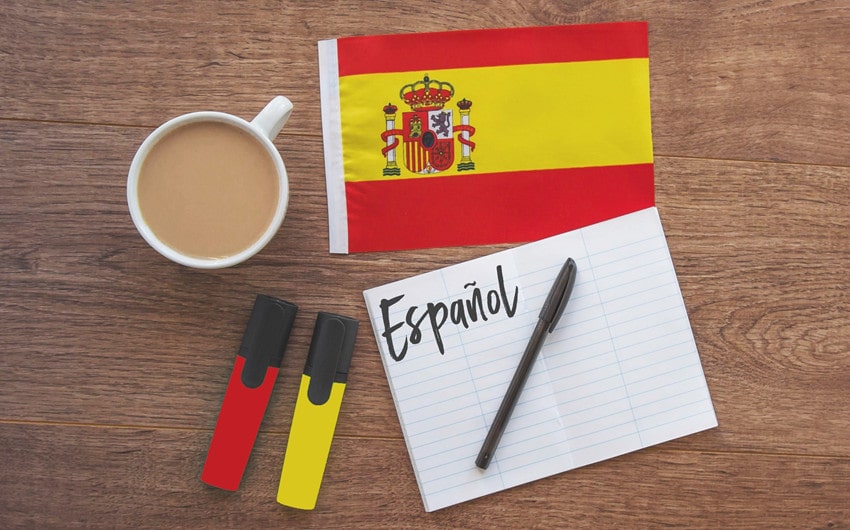Learn the Spanish Alphabet: A Beginner’s Essential Guide
Learning a new language starts with mastering its alphabet. The Spanish alphabet is the foundation for understanding and communicating in Spanish, making it essential for beginners. Whether you’re planning to travel, connect with Spanish-speaking friends, or simply enjoy the beauty of the language, knowing the alphabet is your first step.
In this guide, we’ll explore the Spanish alphabet, from pronunciation to unique letters, helping you build a strong foundation for your Spanish language journey.
The Spanish Alphabet: Overview

The Spanish alphabet is a fundamental part of the language and an essential building block for anyone looking to learn Spanish. Here’s an overview to get you started:
Number of Letters in the Spanish Alphabet
The Spanish alphabet consists of 27 letters. This includes all 26 letters of the English alphabet, plus an additional letter unique to Spanish: ñ (eñe). Understanding these 27 letters is crucial for reading, writing, and speaking Spanish effectively.
Comparison with the English Alphabet
While the Spanish alphabet shares many similarities with the English alphabet, there are notable differences in pronunciation and usage. For instance, some letters in Spanish, such as “j” and “r,” have distinct sounds that are different from their English counterparts. Additionally, the letter “ñ” does not exist in the English alphabet, and it represents a unique sound in Spanish.
Brief History and Evolution of the Spanish Alphabet
The Spanish alphabet has its roots in the Latin alphabet, which was brought to the Iberian Peninsula by the Romans. Over time, as the Spanish language evolved, the alphabet underwent several changes.
The most significant addition was the inclusion of “ñ,” which originated from the medieval practice of placing a small “n” above a letter to indicate a nasal sound. This letter eventually became a distinct part of the Spanish alphabet.
In the past, the Spanish alphabet also included “ch” and “ll” as separate letters. However, in 2010, the Royal Spanish Academy (Real Academia Española) updated the official alphabet, and these digraphs are no longer considered separate letters, but rather combinations of “c” and “h,” and “l” and “l,” respectively. Despite this change, the sounds they represent remain integral to the language.
Spanish Alphabet and Pronunciation
Here’s a chart of the Spanish alphabet with each letter’s pronunciation. This guide will help you get familiar with how each letter sounds in Spanish:
| Letter | Name | Pronunciation |
| A a | a | ah |
| B b | be | beh |
| C c | ce | seh (before e, i); keh (before a, o, u) |
| D d | de | deh |
| E e | e | eh |
| F f | efe | eh-feh |
| G g | ge | heh (before e, i); geh (before a, o, u) |
| H h | hache | ah-cheh (silent) |
| I i | i | ee |
| J j | jota | ho-tah |
| K k | ka | kah |
| L l | ele | eh-leh |
| M m | eme | eh-meh |
| N n | ene | eh-neh |
| Ñ ñ | eñe | eh-nyeh |
| O o | o | oh |
| P p | pe | peh |
| Q q | cu | koo |
| R r | erre | eh-reh (single r); e-rreh (rolled r) |
| S s | ese | eh-seh |
| T t | te | teh |
| U u | u | oo |
| V v | uve | oo-beh |
| W w | uve doble | oo-beh doh-bleh |
| X x | equis | eh-kees |
| Y y | ye / i griega | yeh / ee gree-eh-gah |
| Z z | zeta | seh-tah |
Notes on Pronunciation:
- C: Before “e” and “i,” it sounds like “s” (in Spain, it may sound like “th” as in “think”). Before “a,” “o,” and “u,” it sounds like “k.”
- G: Before “e” and “i,” it sounds like a guttural “h.” Before “a,” “o,” and “u,” it sounds like “g” in “go.”
- H: Always silent in Spanish.
- J: Always pronounced like a guttural “h,” similar to the “ch” in “loch.”
- LL: Traditionally pronounced like the “y” in “yes,” but in some regions, it can sound like the “j” in “jungle.”
- Ñ: Pronounced like the “ny” in “canyon.”
- Q: Always followed by “u,” and the combination “qu” is pronounced like “k.”
- R: A single “r” at the beginning of a word or a double “rr” anywhere in the word is rolled or trilled.
- V: Often pronounced like “b,” though in some regions, there’s a slight difference.
- Y: Pronounced like “y” in “yes” when it is a consonant, and like “ee” when it stands alone or is at the end of a word.
- Z: Pronounced like “s” in most Latin American countries, and like “th” in “think” in Spain.
Individual Letters and Pronunciation
Understanding the pronunciation of each letter in the Spanish alphabet is crucial for speaking and comprehending the language accurately. Here’s a detailed guide to each letter and its pronunciation, along with examples to help you get started:
- A (a): Pronounced “ah,” as in “amigo” (friend).
- B (be): Pronounced “beh,” as in “bueno” (good). In some dialects, it sounds softer, almost like “v.”
- C (ce): Pronounced “seh” before “e” or “i” (as in “cielo” – sky), and “keh” before “a,” “o,” or “u” (as in “casa” – house).
- D (de): Pronounced “deh,” as in “dado” (dice). The sound softens between vowels.
- E (e): Pronounced “eh,” as in “elefante” (elephant).
- F (efe): Pronounced “eh-feh,” as in “familia” (family).
- G (ge): Pronounced “heh” before “e” or “i” (as in “gente” – people), and “geh” before “a,” “o,” or “u” (as in “gato” – cat).
- H (hache): Silent in Spanish, as in “hombre” (man).
- I (i): Pronounced “ee,” as in “iglesia” (church).
- J (jota): Pronounced “ho-tah,” similar to the “h” in “hat,” as in “jardín” (garden).
- K (ka): Pronounced “kah,” used primarily in words borrowed from other languages, as in “kilo” (kilogram).
- L (ele): Pronounced “eh-leh,” as in “libro” (book).
- M (eme): Pronounced “eh-meh,” as in “mesa” (table).
- N (ene): Pronounced “eh-neh,” as in “noche” (night).
- Ñ (eñe): Pronounced “eh-nyeh,” as in “niño” (child).
- O (o): Pronounced “oh,” as in “oso” (bear).
- P (pe): Pronounced “peh,” as in “papel” (paper).
- Q (cu): Pronounced “koo,” always followed by “u,” as in “queso” (cheese).
- R (erre): Pronounced “eh-reh” with a single flap in between vowels (as in “pero” – but); trilled at the beginning of words or as “rr” (as in “perro” – dog).
- S (ese): Pronounced “eh-seh,” as in “sol” (sun).
- T (te): Pronounced “teh,” as in “tierra” (earth).
- U (u): Pronounced “oo,” as in “uva” (grape).
- V (uve): Pronounced “oo-beh,” similar to “b,” as in “vaca” (cow).
- W (uve doble): Pronounced “oo-beh doh-bleh,” used mainly in foreign words, as in “whisky.”
- X (equis): Pronounced “eh-kees,” as in “examen” (exam). In some words, it sounds like “h,” especially in Mexican Spanish, as in “México.”
- Y (ye / i griega): Pronounced “yeh” as a consonant (as in “yo” – I) and “ee” as a vowel (as in “rey” – king).
- Z (zeta): Pronounced “seh-tah” like “s” in most Latin American countries, and like “th” in “think” in Spain, as in “zapato” (shoe).
Unique Letters and Sounds

The Spanish alphabet includes several unique letters and sounds that are distinct from those in English. Understanding these unique aspects is essential for mastering Spanish pronunciation and fluency. Here’s an in-depth look at these special letters and sounds:
Ñ (eñe)
The letter “ñ” (eñe) is one of the most distinctive characters in the Spanish alphabet. It is not found in the English alphabet and represents a unique sound.
- Pronunciation: Pronounced “eh-nyeh,” similar to the “ny” sound in the English word “canyon.”
- Examples: Niño (child), mañana (tomorrow), señor (Mr.).
The “ñ” originated from the practice of placing a small “n” above a letter to indicate a nasal sound in medieval manuscripts. It became a distinct letter in the Spanish alphabet and symbolizes the unique identity of the Spanish language. The “ñ” is also used in other languages such as Galician and Filipino.
LL (elle)
“LL” was traditionally considered a separate letter in the Spanish alphabet, though it is now treated as a digraph (a pair of letters representing a single sound).
- Pronunciation: Pronounced like the “y” in “yes” in most Spanish-speaking regions. In some areas, such as parts of Argentina and Uruguay, it is pronounced like the “j” in “jungle” (a sound known as “yeísmo”).
- Examples: Llama (flame), lluvia (rain), calle (street).
Although “LL” is no longer officially a separate letter, understanding its pronunciation and regional variations is crucial for clear communication.
CH (che)
Like “LL,” “CH” was once considered a separate letter but is now treated as a digraph.
- Pronunciation: Pronounced “cheh,” similar to the “ch” sound in the English word “chocolate.”
- Examples: Churro (a type of fried dough pastry), chico (boy), leche (milk).
While “CH” is no longer a distinct letter in the modern alphabet, it remains an important phonetic component of many Spanish words.
RR (erre)
“RR” is not a separate letter but represents a distinct rolling “r” sound when it appears between vowels.
- Pronunciation: Pronounced with a rolled or trilled “r” sound, created by vibrating the tongue against the roof of the mouth. This sound does not exist in standard English.
- Examples: Perro (dog), carro (car), tierra (earth).
Rolling the “r” can be challenging for English speakers. Practice by making a “ttt” sound and gradually trying to vibrate the tongue. Listening to native speakers and mimicking their pronunciation can also help.
Accent Marks and Special Characters
Accent marks and special characters play a crucial role in the Spanish language, affecting pronunciation, meaning, and grammatical structure. Mastering these elements is essential for accurate communication and comprehension. Here’s an in-depth look at accent marks and special characters in Spanish:
Accent Marks (Tildes)
Accent marks, or tildes, are placed over vowels in Spanish to indicate stressed syllables and to differentiate between words that would otherwise be identical.
Purpose of Accent Marks
Accent marks indicate which syllable in a word is stressed. This is crucial because Spanish has specific rules for natural stress. Words ending in a vowel, “n,” or “s” are usually stressed on the second-to-last syllable. Words ending in other consonants are stressed on the last syllable.
When a word does not follow these rules, an accent mark is used to indicate the stress. Accent marks also help distinguish between homonyms—words that are spelled the same but have different meanings and functions.
Rules for Using Accent Marks
When a word does not follow the natural stress rules, an accent mark is placed on the stressed syllable. For example:
- “Árbol” (tree) – The accent mark indicates stress on the first syllable.
- “Café” (coffee) – The accent mark shows stress on the last syllable.
Accent marks also differentiate homonyms. For example:
- “Sí” (yes) vs. “Si” (if) – The accent mark distinguishes between the affirmative “sí” and the conditional “si.”
- “Té” (tea) vs. “Te” (you, object pronoun) – The accent mark differentiates the noun “té” from the pronoun “te.”
Common Words with Accent Marks
Accents are often used to indicate tense and conjugation in verbs. For instance, “caminó” (he/she/it walked) has an accent to indicate past tense, while “camino” (I walk) does not.
Examples of Words with Accent Marks:
- “Corazón” (heart)
- “Mamá” (mom)
- “Lápiz” (pencil)
- “Teléfono” (telephone)
Diéresis (Ü)
The diéresis, or umlaut (ü), is used in Spanish to indicate that the “u” should be pronounced in combinations where it would normally be silent.
Purpose of the Diéresis
The diéresis clarifies pronunciation in the combinations “gue” and “gui,” where the “u” is normally silent. With the diéresis, the “u” is pronounced.
Usage Rules
The diéresis is used only in specific words and is not common in everyday Spanish. It primarily appears in words of foreign origin or in specific grammatical contexts. For example, “ambigüedad” (ambiguity) and “lingüística” (linguistics) use the diéresis to ensure proper pronunciation.
Examples of Words with Diéresis:
- “Pingüino” (penguin), where the “u” in “güi” is pronounced.
- “Vergüenza” (shame), ensuring the “u” is heard.
The diéresis is used only in specific words and is not common in everyday Spanish. It primarily appears in words of foreign origin or in names.
Recommended Learning Resources

To effectively learn the Spanish alphabet, it’s important to use a variety of resources that cater to different learning styles. Here are some highly recommended tools and platforms that can help you master the Spanish alphabet and improve your overall language skills.
Language Learning Apps
- Duolingo: Offers structured lessons and interactive exercises to help you practice the Spanish alphabet and pronunciation.
- Babbel: Provides comprehensive language courses with a focus on pronunciation and practical use.
- Rosetta Stone: Uses immersive techniques to help you learn Spanish naturally and effectively.
Books and Textbooks
- “Easy Spanish Step-By-Step” by Barbara Bregstein: A popular textbook that starts with the basics of Spanish, including the alphabet, and gradually introduces more complex concepts.
- “Practice Makes Perfect: Spanish Pronouns and Prepositions” by Dorothy Richmond: While focused on pronouns and prepositions, it includes foundational exercises for beginners.
Online Resources
- SpanishDict: A comprehensive online dictionary and language resource offering pronunciation guides and practice exercises.
- BBC Languages – Spanish: Offers free resources, including alphabet guides, pronunciation tips, and beginner exercises.
YouTube Channels
- SpanishPod101: Provides video lessons on the Spanish alphabet, pronunciation, and vocabulary.
- Butterfly Spanish: Offers engaging and easy-to-understand lessons on various aspects of the Spanish language, including the alphabet.







